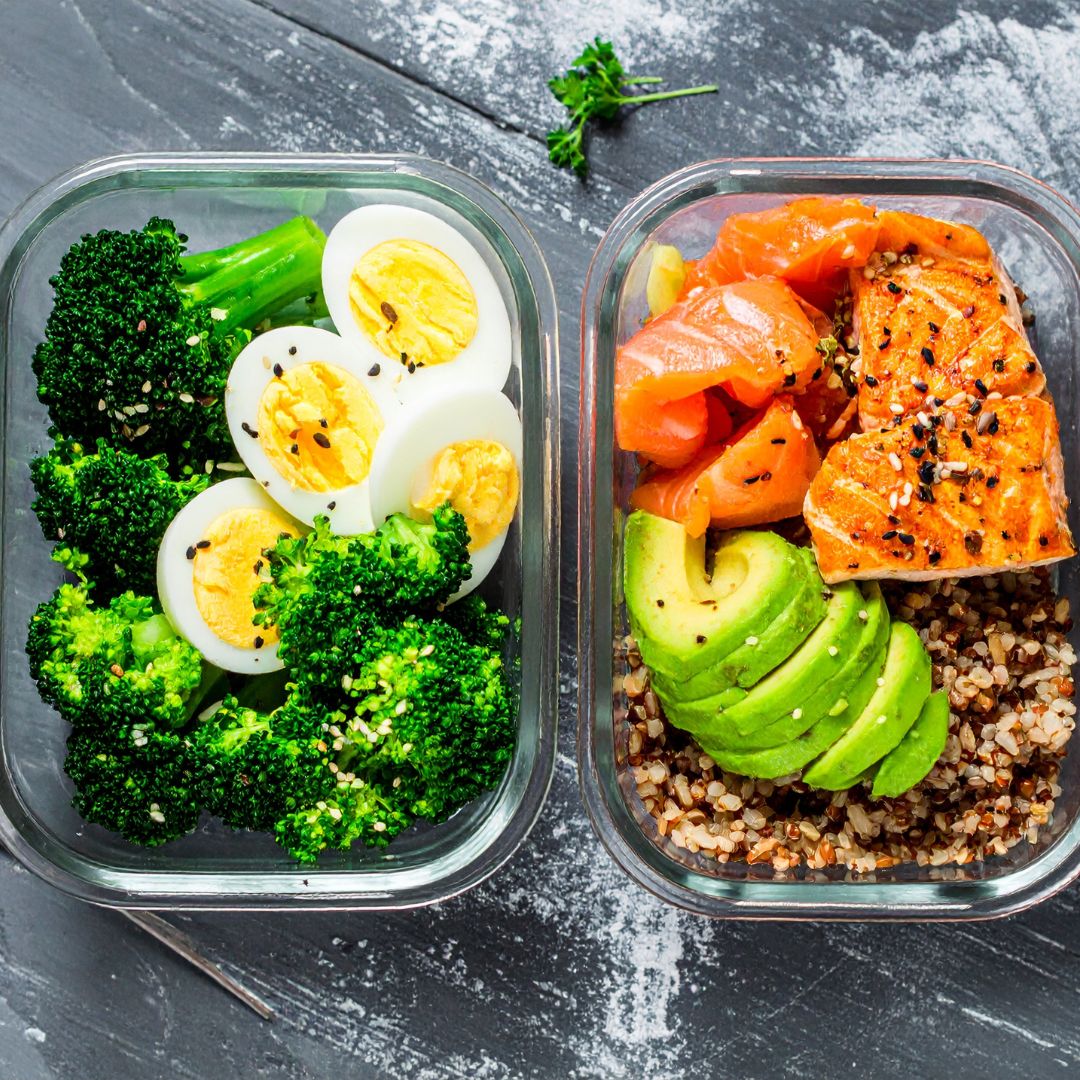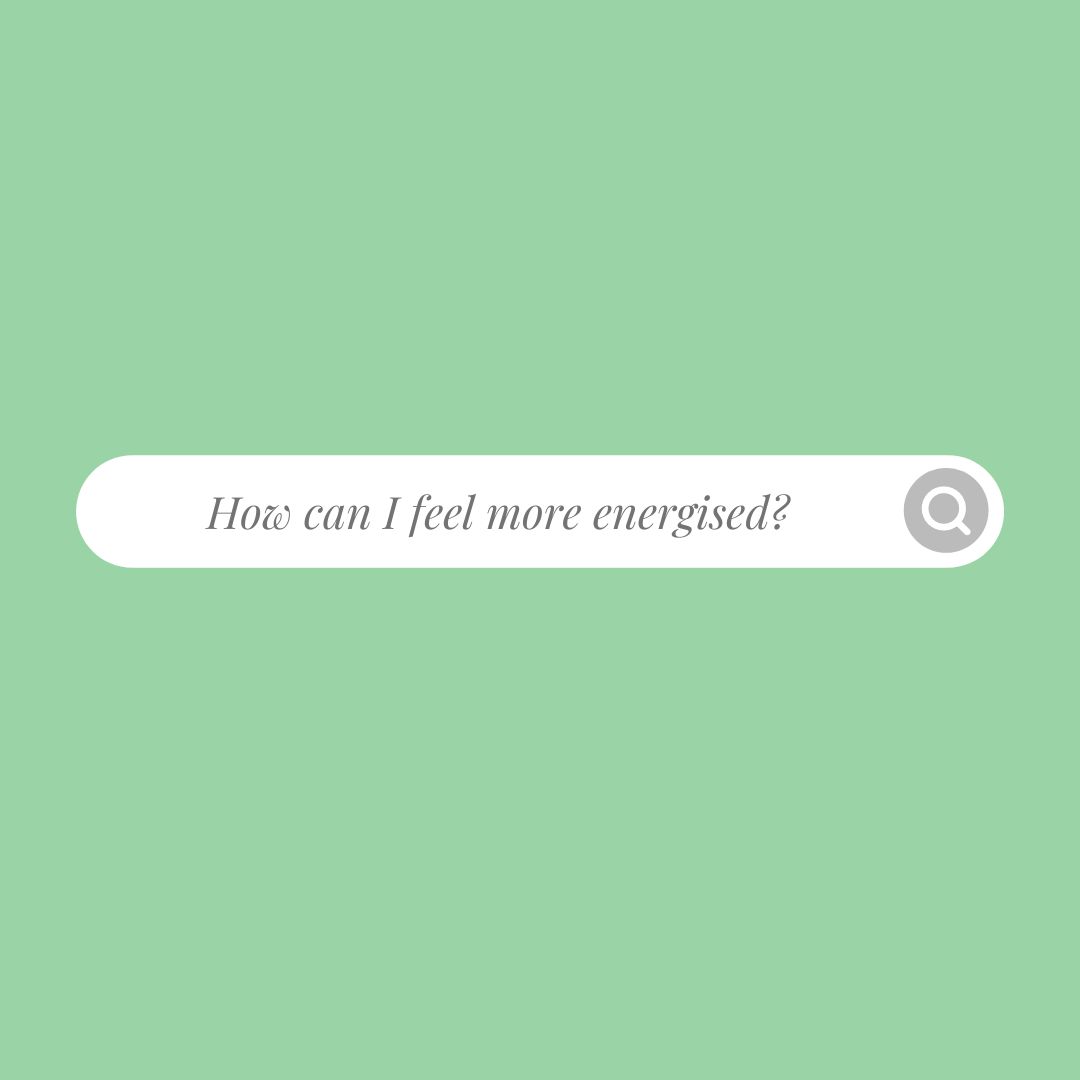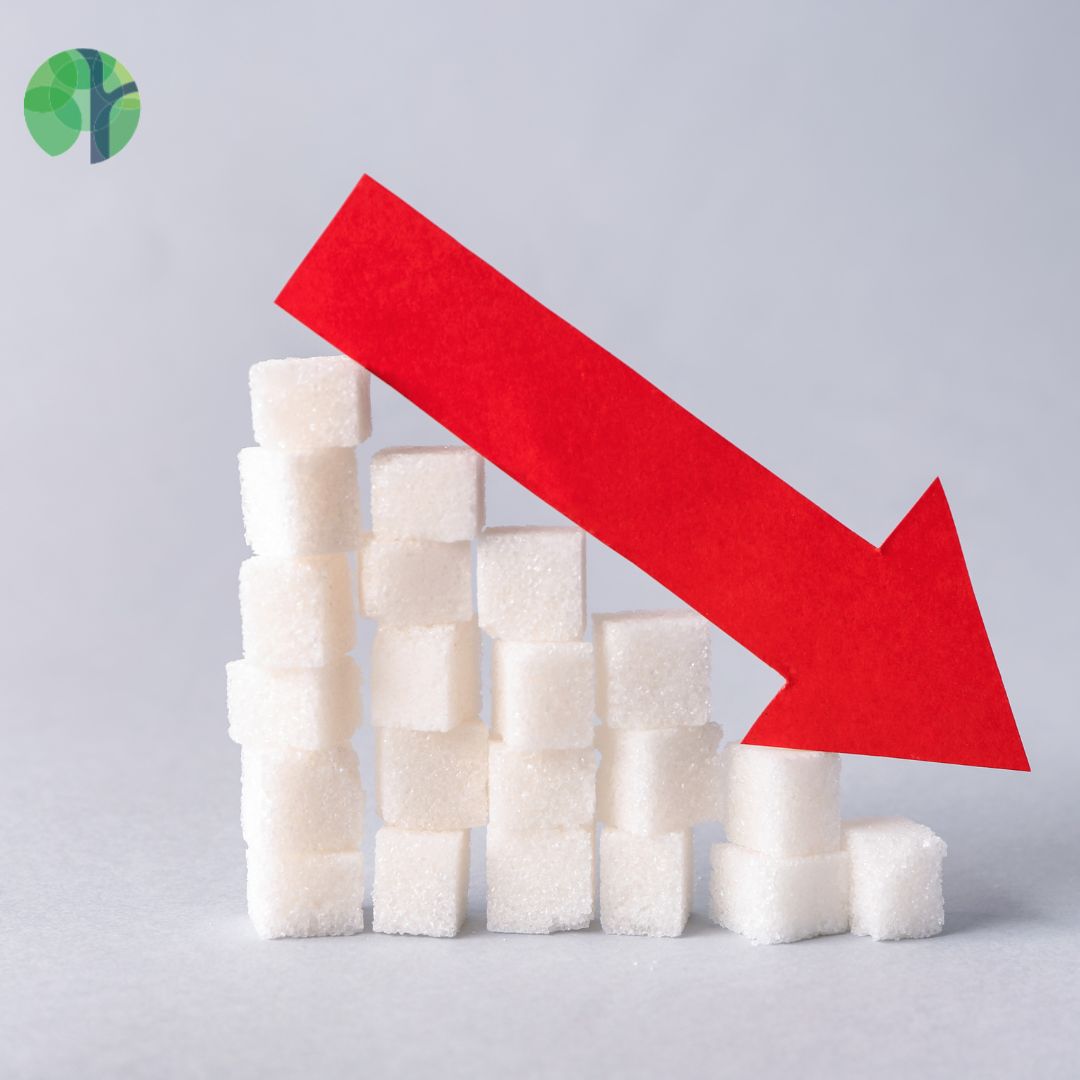
Balance Your Plate, Balance Your Energy
If you often feel your energy dipping, struggle with cravings or find it hard to stay full between meals, you are not alone. These patterns usually have less to do with willpower and more to do with how your metabolism responds to the food you eat each day.
Nutrition research often uses the term “metabolic resilience” to describe how well your body can keep things steady. A resilient metabolism can maintain stable blood sugar, regulate appetite, support mood, and keep energy more even throughout the day. It can also adapt more comfortably if life gets busy, meals are a bit rushed or sleep is disrupted.
The best bit is that you can support this resilience through balanced eating, not restriction. Great news in January! When meals include protein, fibre-rich carbs, and healthy fats, the body has what it needs to do all those things - regulate hunger, manage blood sugar and maintain steadier energy. Small changes to your plate can make a real difference to how you feel!
What Is Metabolic Resilience?
Metabolic resilience describes how easily your body responds to the demands of daily life. It reflects your ability to maintain balanced energy, appetite and blood sugar even when routines are not perfect.
A truly resilient metabolism can switch between fuel sources easily – using both fats and glucose, plus it can regulate hunger hormones well, and it helps to keep blood sugar steady and even throughout the day. This flexibility depends on several systems working well together. These include insulin sensitivity, mitochondrial efficiency (mitochondria are the powerhouses of the cell), availability of certain nutrients, and good gut health.
When resilience is low, the body finds it harder to do all these things. You may notice your energy dips more, particularly in the afternoon, you might have stronger cravings for sugary foods and drink, or difficulty concentrating or feeling hungry soon after eating. These signs are not uncommon and often improve through consistent, balanced eating patterns.
The Role of Blood Sugar Balance
Blood sugar balance is key to maintaining metabolic resilience. After eating, the body releases insulin to move glucose into cells for energy. When meals are balanced, this rise in glucose is gradual, supporting a steady release of energy.
But when meals are high in refined carbohydrates. and low in protein or fibre, they tend to cause sharper glucose spikes. These are often followed by quick drops which can trigger cravings, low energy, irritability or increased appetite.
Scientific research links frequent glucose swings to oxidative stress (which can damage cells), reduced insulin sensitivity and greater metabolic strain over time. Whereas, stabilising glucose responses helps improve hormonal signalling, appetite regulation and overall metabolic health.
Balanced eating helps achieve this by slowing digestion, moderating glucose release and supporting the body’s ability to respond effectively to insulin.
Protein, Fibre and Healthy Fats Explained
Protein
Protein supports metabolic health by slowing the rate at which food leaves the stomach and by influencing appetite hormones such as GLP-1 and peptide YY. Including protein at meals can improve satiety and reduce the likelihood of overeating later in the day. It also provides essential amino acids (protein building blocks) for enzymes and hormones involved in glucose regulation.
Practical tip: Aim for a palm sized portion of protein at each meal. Options include meat, poultry, fish, tofu, tempeh, Greek yoghurt or legumes if tolerated.
Fibre
Fibre, particularly soluble fibre, slows the absorption of glucose which supports steadier post-meal blood sugar responses. Fibre also feeds beneficial gut bacteria which produce special chemicals called short chain fatty acids, such as butyrate. These compounds influence inflammation, insulin sensitivity and appetite regulation.
Practical tip: Add vegetables to lunch and dinner, include ground flaxseed or chia seeds at breakfast and vary your plant foods throughout the week.
(Internal link: March blog on Fibre Diversity)
Healthy Fats
Healthy fats such as olive oil, nuts, seeds and avocado contribute to slow and steady energy release. They support hormonal communication, help with the absorption of fat-soluble nutrients, and promote longer lasting satiety.
Practical tip: Add a small handful of nuts to salads, top meals with seeds or drizzle vegetables with olive oil.
Everyday Nutrition Tips for Good Energy
Building metabolic resilience does not require extreme dieting. Consistency with small, achievable changes is much more effective.
Start with a balanced plate
Aim for a combination of protein, fibre-rich carbs, vegetables and healthy fats. This will naturally slow digestion, balance sugar levels, and supports stable energy.
Include protein at breakfast
A protein-rich breakfast helps regulate hunger hormones and supports steadier blood sugar through the rest of the day.
(Internal link: October blog on Balancing Blood Sugar in Midlife)
Add rather than restrict
Instead of focusing on what to cut out, think about what you can add. An extra portion of vegetables, a spoonful of seeds or a serving of protein can have a noticeable impact on energy and cravings.
Support your gut microbiome
A diverse microbiome is linked to improved metabolic flexibility and lower inflammation. Aim for a wide range of plant foods each week. Herbs, spices, nuts and seeds all count.
Reduce ultra processed foods gradually
Ultra processed foods can lead to rapid glucose rises and lower satiety. Reducing these step by step often feels more realistic and sustainable than cutting them out completely.
Eat slowly and mindfully
Taking your time to eat supports digestion and helps appetite hormones function more effectively which may reduce overeating.
Balanced snacks if needed
If you choose to snack, pair foods that combine protein and fibre such as yoghurt with berries, hummus with vegetables or nuts with fruit. This supports steadier energy between meals.
Building metabolic resilience is about nourishment rather than restriction. By balancing meals, supporting your blood sugar, and creating healthy habits, you can experience steadier energy, fewer cravings, and a more adaptable metabolism. Over time these gradual shifts support long term wellbeing in a sustainable way. Or if you’d like to discuss this further, why not get in touch with me? You can book a free call here.

Diabetes - What You Should Know About Diagnosis & Prevention
Every November, Diabetes Awareness Month highlights one of the UK’s fastest-growing health challenges. More than 5.8 million people in the UK are living with diabetes, and an estimated 850,000 remain undiagnosed (Diabetes UK, 2024).
Understanding the condition, recognising the signs, and knowing when to speak to your GP can make a real difference to long-term health.
What Is Diabetes?
Diabetes is a condition where blood sugar (glucose) levels become too high because the body can’t use insulin effectively or doesn’t produce enough of it.
T2D is the most common form, and its onset is often gradual. Many people live with pre-diabetes (also known as non-diabetic hyperglycaemia) for years without knowing.
Unchecked, high blood sugar can lead to complications such as heart disease, nerve damage, eye or kidney issues, which is why early detection and preventive lifestyle steps are so important.
How Your GP Tests for Diabetes
If you notice frequent thirst, increased urination, tiredness, blurred vision or slow-healing wounds, it’s worth discussing these symptoms with your GP.
Typical UK diagnostic tests include:
If results are raised but below diabetic range, you may be told you have pre-diabetes and offered monitoring or referral to the NHS Diabetes Prevention Programme (NDPP).
The UK National Screening Committee currently does not recommend universal screening for type 2 diabetes, but GPs are encouraged to test those with risk factors such as family history, high blood pressure, or overweight (UK NSC 2023).
Can Type 2 Diabetes Be Hereditary?
Yes, genetics can influence your risk, but it’s not destiny. Having a close relative (parent, brother or sister) with type 2 diabetes increases your likelihood two- to six-fold compared with someone without that history (Diabetes UK, 2023). This happens because genes affecting insulin production and glucose metabolism can be inherited, but environment and lifestyle still play the largest role.
Regular activity, balanced eating, maintaining a healthy waist circumference, and not smoking all help offset this inherited risk.
Evidence That Prevention Works
Strong UK evidence shows that type 2 diabetes can often be delayed or even prevented:
Lifestyle Strategies Beyond Nutrition
While food choices are key, several other areas influence blood sugar and metabolic health:
1. Movement and Exercise
Even modest daily activity improves how muscles use glucose. Both aerobic exercise (like brisk walking or cycling) and strength training enhance insulin sensitivity.
Breaking up long periods of sitting is also beneficial. Weight training is essential to helping improve insulin sensitivity too.
2. Sleep Quality
Consistently getting less than seven hours’ sleep can impair glucose control.
Prioritise a regular bedtime, reduce evening screen time, and keep the bedroom dark and cool.
3. Stress Management
Chronic stress raises cortisol, a hormone that can elevate blood sugar.
Mindfulness, deep breathing, time in nature, or supportive conversations all help moderate stress responses.
4. Weight and Body Composition
Even a 5–10 % reduction in body weight can significantly improve blood sugar control. Focus on building muscle through gentle resistance exercise and balanced protein intake.
5. Regular Check-ups
For those living with diabetes, the annual review offered by the NHS includes checks for HbA1c, blood pressure, cholesterol, kidney and foot health, all vital for preventing complications (NHS Diabetes Care Processes, 2024).
For everyone else, periodic health checks for blood pressure, waist circumference, and glucose levels can help spot early warning signs.
Taking Action This Diabetes Awareness Month
Diabetes prevention isn’t about perfection - it’s about awareness and steady change. This November, consider booking a routine health check, reviewing your lifestyle habits, and learning more about how small steps protect long-term health.
Explore related topics in:
If you’d like personalised support to improve your energy and metabolic health, book a Blood Sugar Balance Consultation.
Disclaimer: This blog is for general educational purposes only and should not replace medical advice. Always consult your GP or healthcare provider before making changes to your diet, medication or lifestyle.

Insulin Resistance and Midlife Weight Gain: Why Blood Sugar Balance Matters
If you feel like you’re doing everything right, but your energy still dips mid-afternoon or the scales won’t budge, insulin resistance could be playing a role. It’s one of the most overlooked factors in midlife weight gain and fatigue, but it’s also one that can respond really well to nutrition and lifestyle changes.
What Is Insulin Resistance?
Insulin is a hormone made by the pancreas that helps move glucose (sugar) from your bloodstream into your cells, where it’s used for energy. Over time, especially when the diet is high in refined or ultra-processed foods, your cells can become less responsive or deaf to insulin’s signal. The pancreas compensates by producing more insulin, but chronically high insulin can encourage fat storage, particularly around the middle, and lead to erratic energy and cravings.
Insulin resistance is increasingly common in our 40s and 50s. It isn’t a disease, but a sign that the body’s metabolism needs support. The earlier it’s addressed, the easier it is to rebalance.
Signs and Symptoms to Watch For
Insulin resistance often develops gradually and can go unnoticed for years. Common indicators include:
These symptoms don’t diagnose insulin resistance but can indicate that your blood sugar regulation needs support. Discuss any concerns with your GP and request appropriate testing if needed.
How Nutrition Can Support Insulin Sensitivity
Nutrition plays a central role in how our cells respond to insulin. Meals that combine protein, fibre and healthy fats slow the release of glucose into the bloodstream, helping to keep energy levels steady and reduce cravings.
For most people, this isn’t about cutting out all carbohydrates, it’s about choosing the right ones. Whole, minimally processed foods with natural fibre and texture support both blood sugar balance and gut health.
Lifestyle factors matter too. Regular movement, particularly strength or resistance training, encourages muscles to absorb glucose more efficiently. Prioritising sleep and managing stress can also prevent the cortisol spikes that make blood sugar harder to control.
If you’d like to explore how these principles apply to midlife, read my related post on Balancing Blood Sugar in Midlife.
Foods That Improve Insulin Response
A few small dietary shifts can have a big impact on insulin sensitivity and overall metabolic health:
A balanced plate might look like grilled salmon with quinoa and broccoli - a simple, nutrient-dense combination that supports steady energy and hormone balance - see image above.
Taking the Next Step
If sugar cravings, fatigue or weight gain feel familiar, it may be time to look beyond willpower and consider what’s might be happening with your blood sugar balance.
Addressing insulin resistance early can transform energy levels, appetite regulation and long-term metabolic health.
You can learn more about building Metabolic Resilience in my post here or book a Blood Sugar Balance Consultation to explore personalised nutrition and lifestyle strategies that work for you.
Disclaimer: This blog is for general educational purposes only and is not a substitute for medical advice. Please consult your GP or healthcare provider before making changes to your diet, supplements or medication.

Do you have symptoms such as always feeling tired, constant pangs of hunger, inability to lose weight, sugar cravings all the time, fatigue after meals, central weight gain, and generally just feeling rubbish?
Well, you just might be suffering with insulin resistance – this is one of the main symptoms I see in perimenopausal and menopausal women (hello menobelly!), but it is also one of the main drivers of PCOS.
If you think you might be suffering with insulin resistance, here are my top tips to help you get back to feeling well again:
These foods are the main trigger for insulin production, as your body needs the hormone insulin to move the glucose from these foods out of your bloodstream.
Reducing your intake of these kinds of foods can improve your insulin sensitivity as you won’t need to produce as much insulin.
Firstly, ditch all those sugary snacks entirely – you really don’t need them. I’m talking cakes, biscuits, ice cream, sugary drinks, desserts. And then think about the quality and the quantity of complex carbohydrates that you’re having.
Maybe replace your big bowls of spaghetti with some courgetti or think about eating steamed new potatoes instead of jacket potatoes.
Stress is a major contributing factor to your blood sugar balance. When we are stressed, our body switches into ‘fight or flight’ mode so that we can battle or evade danger.
One of the things that happens is the stress hormones we produce encourage our body to break down its energy stores into glucose, so that it will enter our bloodstream and be ready for fuel for our muscles.
However, if this stress is constant rather than acute (I’m thinking work or family stress as opposed to facing a tiger), then we can end up with persistently high blood sugar levels ergo high insulin and, bam, possible insulin resistance.
Whilst we can’t always change or remove the stressors in our lives, we can learn to build resilience to those stressors. Yoga, tai chi and meditation have been shown in research to help build stress resilience. Something to think about adding to our daily routines.
We all know that sleep is great for our health! But studies have linked poor sleep to reduced insulin sensitivity.
Our body does a lot of repair and resetting work while we sleep, so if we are not having enough sleep, this work won’t be getting done.
Research shows that how much a person sleeps impacts both their insulin and their cortisol (stress hormone) levels, thereby affecting their insulin sensitivity. Aim for 7-9 hours per night, but with a regular sleep and wake-up time.
Regular exercise is an excellent way to improve our insulin sensitivity. It helps us move sugar into the muscles for storage and it immediately improves our insulin sensitivity for up to 48 hours dependent on the type and duration of exercise undertaken.
While both weight training and aerobic exercise have been seen to be beneficial, research shows that it’s a combination of both that is most effective in increasing insulin sensitivity.
Replacing refined carbohydrates with more veggies makes sense when we want to be healthy, doesn’t it?
But eating more veg can make us more insulin sensitive too. Firstly, many vegetables are excellent sources of fibre, particularly soluble fibre.
Soluble fibre feeds the friendly bacteria in our guts and having a balance microbiome has been linked to increased insulin sensitivity. Brussel sprouts, avocados, broccoli, black beans and sweet potatoes are all good sources.
So, these are my tips to getting you back on track! Try them out and see if they can help relieve your symptoms, particularly if you are suffering with PCOS, perimenopause symptoms, or you just can’t move the weight around your midriff. Or why don’t you book in a free 30-minute health review with me – just click here.

Feel More Energised
There’s a lot to like about getting older. You’ve made most of the silly mistakes you’re going to (and survived), you’ve likely got more time on your hands since your children have flown the nest (or are at least at a more self-sufficient stage), you now have the confidence to care much less about what other people think of you and no longer suffer fools, you may find that you have more money in the bank to do with as you wish, and since the desire for more and better has diminished, you’re calmer and more content.
But do you find yourself wishing ‘if only…’ in relation to your health and wellness?
You may wonder where your energy and vitality has gone, your skin has probably lost its dewy glow and freshness, your digestion is more troublesome than it’s been in years, and you want to ensure you’re taking care of your long-term health, so there are no nasty surprises lurking round the corner.
I want to let you know that the food you eat matters more than you think. What and how you eat influences every area of your health and eating the right diet for YOU coupled with some positive lifestyle changes, like getting the sleep you need and managing stress, will help you feel like a new person.
There’s no reason that you cannot feel fabulous at any age, if you take the right actions, and it’s my job as a nutrition coach to motivate and support my clients to do just that. Of course, working one-to-one means I can create a nutrition and lifestyle strategy built around your exact needs. But here is my number 1 tip – get your blood sugar balanced.
There are so many reasons that you might be feeling more sluggish than you’d like, and pinpointing what’s behind your lack of energy is something we’d need to discuss in person. But what I’m going to share with you is a simple strategy that can make a big difference.
Balancing blood sugar levels is one of the key things I help my clients with. Eating in a way that provides a constant supply of energy through the day will help you avoid dips in blood sugar than can leave you feeling tired, grumpy and craving the ‘wrong’ kinds of foods.
Very simply, you’d want to have a little protein at every meal and snack. This includes meat, fish, eggs, and vegetarian protein sources like tofu, lentils, beans, chickpeas and quinoa. You also need plenty of non-starchy veg (starchy veg include potatoes,parsnips, sweet potatoes, corn) and smaller portions than you may be used to of starchy carbs like potatoes, rice, bread and pasta.
Unfortunately, the staple diet for many people involves cereal, sandwiches and pasta – often several servings in the same day – and this can contribute to blood sugar highs and subsequent crashes.
See if you can move to three meals a day, with no snacks. Eat enough at each meal to sustain you – including protein and healthy fats will help with this. And be mindful of the quality and quantity of carbohydrates you are including.
Watch out for your caffeine and alcohol intake too, as these drinks can seriously mess with your blood sugar balance.
If you’d like further tips on getting the balance right, why not book in a call with me here?

Six Steps to Blood Sugar Balance
Blood sugar balance is something I work on with *every* client. It is the key to feeling more energised, avoiding that mid-afternoon slump and losing weight. You only feel better with it!
Following these main tips are first steps:
However, there are some simple hacks that can help you feel more balanced and can keep you on your health path:
If you’d like to know more about blood sugar balance and how it can help your health, why not get in touch? You can book a free 30-minute call with me here.
![]()
Please get in touch and find out more - I offer a free 30-minute exploratory call.